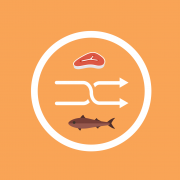What is the ‘New Normal’ for Food Safety?
In 2001, I remember thinking that life in the United States would never again be the same as it was prior to September of that year.
Sure enough with the turn of time, the term ‘food defense’ quickly entered the public vernacular as new standards began to materialize governing food security and vulnerability was common as a popular sentiment that supposed that food supply chains could be the next target.
Now almost 20 years later, it’s safe to say the world might never be the same again with the Coronavirus impacting every nation globally and posing a ‘9/11 a day’ to those of us in the US.
Thomas Fuller was one of the first in the English language to make a living from his writings, and to anyone that knows an aspiring writer, rather aptly once remarked that “all things are difficult before they are easy”.
All things are difficult before they are easy
Despite being coined nearly a half-millennium ago, I believe this sentiment is still as true as the day the ink used to pen it was wet.
It seems to me the food industry sits on the precipice of unbridled changes which arguably have already begun in earnest as an immediate response to the challenges proposed in 2020 and are likely to reverberate for many more years to come.
What has changed?
At the micro-level, shutdowns forced the temporary closure of businesses across industries stunting the global economy.
While on a larger level, the DOW, NASDAQ, FTSE, or whatever other metrics you might use to evaluate economic health are well-exceeding expectations in spite of what those on the forefront of commerce are experiencing, with many anecdotal stories of austerity emerging.
As the world begins to re-emerge from their shelters, those involved in the food supply chain have been working tirelessly to bring it back to its former strength in spite of significant strain.
It is probable that business is not going to return to the way things were prior to March 2020
To be clear, I truly believe it is probable that business is not going return to the way things were prior to March 2020 ever again.
This was a suspicion I held personally that was all but reconfirmed to me when the FDA announced their Blueprint for the New Era of Smarter Food Safety which was quickly adapted to the learnings from Covid-19 and which intend to provide enhanced tools for the new challenges we have.
For the FDA to react so quickly, shows they acknowledge the significance of the current climate
As I discussed in a previous blog on FSMA which was the last time the FDA made such significant change, monoliths often move slowly and cautiously out of a desire for permanence, so for them to react so quickly and so prominently, shows that they have acknowledged the significance of the current climate and embraced what Thomas Fuller would call the “hard” part in order to make things easier for the industry into the well far-flung future.
What can be done differently?
Prior to the COVID19 pandemic, food safety professionals could ‘get by’ having their food safety and supplier quality management systems simply documented on paper or tucked away on an excel spreadsheet as long as these programs were accessible by their staff who were often within arm’s reach of each other, typically working in the same office.
Prior to COVID-19, food safety professionals could get with legacy systems as long as they were accessible
The merits of the sustainability and efficacy of such an approach was not without its detractors (including myself) but ultimately such systems were endemic in the industry by virtue of their legacy and the fact there was a low barrier of entry to start with them.
In these, HACCP programs, along with their complimentary SOP’s, were able to be tucked away in rudimentary document control systems and oversight was typically limited to direct observations performed by the QA Manager whenever they had an opportunity to walk the production lines, or whenever they were called to respond to a crisis out on the floor.
Audits were typically limited to predefined checklists of food safety standards and rigid in their nature, and when they would need to be changed and documents versioned, unless you had the resources it was a can of worms that Pandora herself might delay opening.
Audits were typically limited… and unless you had resources, it was a can of worms that Pandora herself might delay opening
As a food safety issue occurred, communication of it could be cumbersome as it might require copying and scanning records, then emailing them to relevant individuals where it might sit last in their ‘inbox’ and go unseen causing unnecessary delays.
When an audit involved an external party, such as those from a Certification Body conducting one on behalf of the SQF or BRCGS, they would need to be hosted on-site, often for a day or two, and be given free reign over the environment, something that is just no longer feasible.
The Coronavirus brought about a paradigm shift in our society with things like social distancing, wearing masks, and excessive hand washing.
One of the most obvious and long last impacts of the Coronavirus to the food industry that is quickly becoming apparent is an acceleration of the digital thread of transformation and a wake-up call that just because we can do things one way, doesn’t mean we should continue to do so when there are safer and more pragmatic options available, even if it does mean an element of strain to configure these new approaches in the immediate term.
Just because we can do things one way, doesn’t mean we should continue to do so
In the food industry, we’ve seen additional changes recommended by the CDC such as daily health checks, workplace hazard assessments, and improved building ventilation systems.
Workforce management became more prominent than ever with the CDC not just recommending best practices for contract tracing and proximity tracking, but a myriad of activities and initiatives that businesses could deploy to assist in the fight against Covid-19.
The food industry, in particular, was, and still is, under a tremendous strain with many different challenges arising across sectors from manufacturers to restaurants with many implementing split shifts, reduced workforces, and by consequence, risk running a more ‘light-touch’ approach to compliance than they should ultimately strive for.
What should be done differently?
The world itself has changed, and the food industry needs to adapt along with it.
It is widely accepted that necessity is the mother of all invention, however, in this instance, there is no need to reinvent the wheel, but it might be better to acknowledge that necessity is the mother of adaptation, not invention.
While the principles of food safety systems may essentially remain the same, the old models might not.
While the principles of food safety systems may essentially remain the same, the old models might not
The acknowledgment from GFSI and its related schemes to allow the use of ICT and hybrid audits shows that industry is willing to accelerate the ‘Digital Transformation’ to ‘Industry 4.0’.
As a result, what this means in practical terms is that Food Safety Managers will now be more reliant on technology to perform tasks like communication, remote auditing, and medical screening.
At its core producing and providing safe quality food to consumers is something that is a requirement that remains unchanged, but how we meet these requirements must adapt to circumstance.
Providing safe quality food remains unchanged, but how we meet these requirements must adapt to circumstance
It is all but inevitable that we are likely to see many more changes in the coming months and years, and technology will play a large role in these changes.
Safefood 360° provides the platform from which your company will remain agile enough to maintain accountability in remote working environments while retaining the flexibility to make changes and scale as your business grows.
Remote food safety management is now a real and viable possibility with an agile platform that allows users to log in from virtually anywhere and communicate in real-time, meaning not only can internal audits be performed against any of the 100’s of integrated food safety checklists (GFSI, FDA, Tesco, etc.), but interim guidance checklists which adheres to the World Health Organization (WHO) and Food and Agriculture Organization of the United Nations (FAO) can also be used daily to confirm best efforts are being applied.
Audits both from retailers and technical standards, as well as from the legislators, reflect that manufacturers are acting in the best interests of our consumers, and technology is an enabler that allows us to meet these standards in as efficient a manner as possible.
To hew out of the mountain of despair a stone of hope
Another quote I am fond of is Martin Luther King Jr’s is that with the right mindset “we will be able to hew out of the mountain of despair a stone of hope”.
Some people also believe that nothing worth having comes easy, but to meet these challenges for now and the future, it seems that recent changes have laid the foundational principles to accelerate our industry into the future.
Changes have laid the foundational principles to accelerate our industry into the future
I truly believe that looking forward, Safefood 360° offers the tools for us to lay these stones and build a better industry for us all well into the future.
I am excited for the years ahead and look forward to speaking with you all about creating a long-lasting legacy and positive changes for our industry.












Leave a Reply
Want to join the discussion?Feel free to contribute!